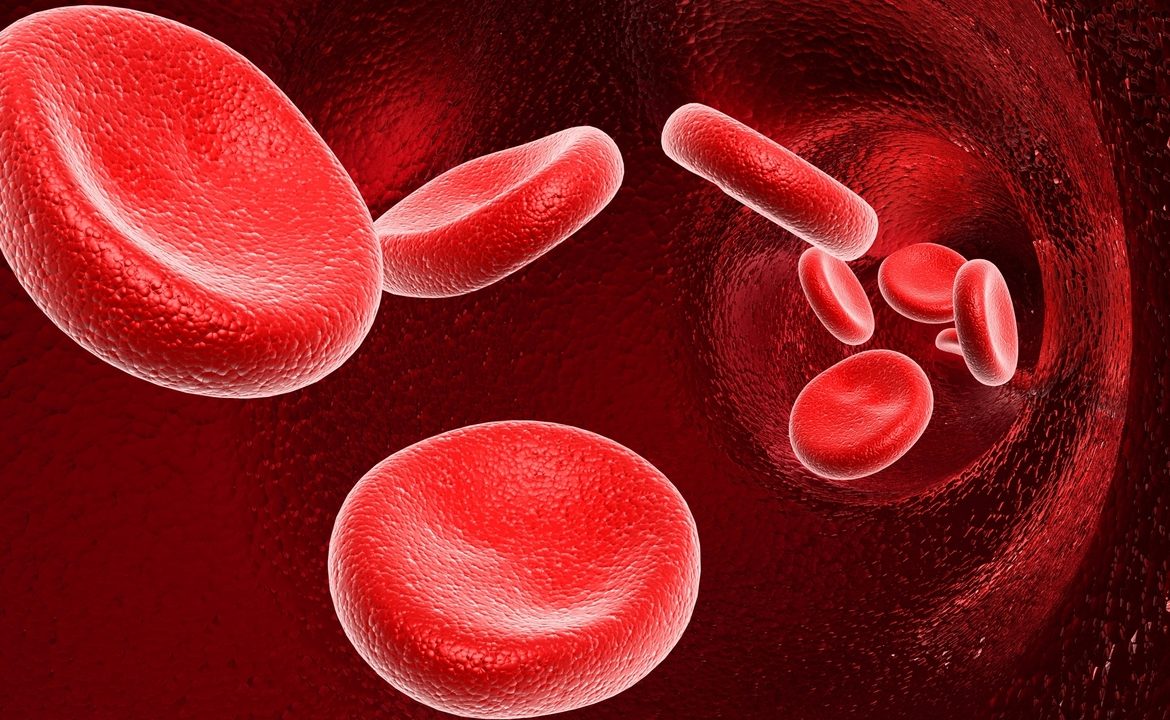What is Leukemia?
Leukemia is a type of blood cancer or the bone marrow. It hinders the body’s capability to fight against any infection. In this malignant cancer, the bone marrow as well as the other blood-forming organs generates increasing number of abnormal leucocytes. There are various types of leukemia that one can suffer from. Some of them are acute myeloid leukemia, chronic lymphocytic leukemia and lymphoblastic leukemia. Some patients do not show any specific symptoms related to this disease, simply because the type of leukemia may be slow growing.
What are the types of Leukemia
There are majorly four types of leukemia. Let’s have a look at them:
Acute myeloid leukemia (AML)
Acute myeloid leukemia (AML) is a fast-growing type of blood cancer and the bone marrow. It is also known as acute myelogenous leukemia, acute myeloblastic leukemia, acute granulocytic leukemia or acute nonlymphocytic leukemia.
Chronic myeloid leukemia (CML)
This type of cancer starts affecting the blood in the body as well as the bone marrow. It initially starts in the blood-forming cells of the bone marrow and gradually spreads to the blood, post which it spreads in the entire body. The Chronic myeloid leukemia (CML) is also known as chronic myelogenous leukemia.
Acute lymphocytic leukemia (ALL)
This type of blood cancer occurs when abnormal white blood cells starts accumulating in the bone marrow. Acute lymphocytic leukemia (ALL) is also termed as acute lymphoblastic leukemia and acute lymphoid leukemia.
Chronic lymphocytic leukemia (CLL)
This is type of slow-growing blood cancer that initially begins in the lymphocytes in the bone marrow and gradually enters into the blood. Chronic lymphocytic leukemia (CLL) is capable of spreading to the lymph nodes and other body organs such as the liver and spleen.
Less common types of Leukemia are also mentioned below:
Chronic myelogenous leukemia: This is a type of blood cancer that develops from the myeloid cells
Acute myelogenous leukemia: This usually occurs both in children as well as adults. This type of blood cancer makes the growth of myeloid cells at a faster speed
Juvenile myelomonocytic leukemia: This type of leukemia occurs usually in children who are below 6 years of age
Hairy cell leukemia: This is very uncommon kinds of chronic leukemia.
T-cell prolymphocytic: This is a very rare and unusual malignancy identified by the proliferation of small- to medium-sized prolymphocytes of postthymic origin with distinctive clinical, morphologic, immunophenotypic, and cytogenetic features. Ref: https://www.ncbi.nlm.nih.gov/pmc/articles/PMC3523759/
What are the Signs and symptoms of Leukemia
Mentioned below are the signs and symptoms of leukemia:
Poor blood clotting: The immature white blood cells crowd out the platelets that is actually crucial for blood clotting. As a result, the person can either bruise or bleed easily and at the same time can heal slowly. This may lead to a minor haemorrhage, resulting into development of petechiae representing a minor haemorrhage.
Frequent infections: As all know that the white blood cells are essential to fight off the infection. In case these are suppressed or don’t work properly, you can get frequent infections making the immune system attack other good body cells.
Anemia: Anemia occurs due to shortage of good red blood cells growth resulting into pale skin and difficulty in breathing.
Other symptoms: You may get some other common symptoms such as sudden weight loss, tiredness, night sweats, bone pain, flu etc. Usually enlargement of the liver or spleen will make the patient feel full resulting in weight loss due to less food consumption.
What are the Causes of Leukemia
Since the exact cause of leukemia remains unknown, a mixture of genetic as well as environmental factors may become the primary cause of this type of blood cancer. When the DNA of the immature blood cells especially the white cells get damaged in some or the other way, leukemia occurs. As a result, the blood cells grow and divide at a faster rate continuously to produce many. All the healthy blood cells die and are then replaced by the new cells. These cells are later produced in the bone marrow. However, the abnormal blood cells die after some time accumulating and occupying more and more space. Due to this, the healthy white blood cells stops growing and functioning normally. Leukemia is thus caused because the bad cells crowd out the good cells in the blood.
It is also said that exposure to radiation, smoking, genetic or hereditary history of leukemia, certain chemotherapy as well as exposure to benzene can cause leukemia.
What is the Diagnosis of Leukemia
A doctor especially Hematologists will carry out a physical examination. You will be enquired thoroughly about personal and family medical history. Any signs and symptoms of anemia or an enlarged liver or spleen would be figured out. The doctor may ask you to undergo certain blood assessment in the laboratory. In case of suspection of leukemia, the doctors will also advice a bone marrow test. Here, the bone marrow usually from the hip is taken out with the help of a long, hollow and fine needle. Additional tests are carried out to find out the type of leukemia that you are suffering from. At times, the doctors may also ask you for a chest x-ray to figure out enlarged lymph nodes.
What are the Treatments available for Leukemia
As I mentioned above the 4 major types of leukemia, let me also tell you’ll that they affect people differently. Once the diagnosis is done, the treatment of this dreadful disease will depend on three factors such as the kind of leukemia, the person’s age and his/her overall health condition. Doctors suggest chemotherapy as the first line of treatment depending on the type of cancer one has fallen prey to. The chances of remission are higher in case of an early diagnosis and subsequent treatment.
Your doctor may suggest you the below types of treatment:
- targeted therapy
- interferon therapy
- chemotherapy
- radiation therapy
- surgery
- stem cell transplantation
There is a difference in chemotherapy and targeted therapy. Where chemotherapy may affect the whole body, the targeted therapy is specified to aim only at a specific part of the cancer cell. At times, Chronic lymphocytic a type of chronic leukemia may not need treatment in the earlier stages of diagnosis, however a regular monitoring is highly recommended.
A bone marrow transplant is highly effective in case of a chronic myeloid leukemia (CML).
Acute lymphoblastic can be often cured with the help of a treatment; however the same needs to be treated immediately upon diagnosis. This is done with the goal of inducing a remission. Once the remission is achieved, it is important that the patient receives a therapy to prevent a relapse of the leukemia. This is known as consolidation or maintenance therapy.
Acute myelogenous usually occurs both in children as well as adults. This type of blood cancer makes the growth of myeloid cells at a faster speed. The treatment however depends on various factors such as your age, the type of disease, your medical history and overall wellbeing. Usually doctors consider remission induction therapy and consolidation therapy.
Chronic myelogenous is a slow progressing bone marrow and blood cancer. Usually, the initial therapy to treat this type of cancer is usage of Tyrosine kinase inhibitors (TKIs).
Hairy cell leukemia is very uncommon kinds of chronic leukemia. The line of treatment for this type of cancer includes chemotherapy, biologic therapy, high-dose chemotherapy, targeted therapy with a monoclonal antibody, a clinical trial of a new biological therapy as well as a new targeted therapy.
T-cell prolymphocytic leukemia is treated with the use of the monoclonal anti-CD52 antibody,alemtuzumab. This has considerably enhanced the result and survival in T-PLL indicating the high-dose therapy options majorly aiming to eradicate the disease.
Juvenile myelomonocytic is a type of leukemia that occurs usually in children who are below 6 years of age. There is no single chemotherapy for the treatment of Juvenile myelomonocytic in children suffering this disease. Only a stem cell transplant may be of some help depending upon case to case.
What is the Prognosis of Leukemia
The age of the patient, his medical condition and the type of leukemia that he is suffering from are the factors that actually decide the prognosis of leukemia. It has been noted that the mortality (death) rates for leukemia are usually higher in elders than in younger adults as well as children. Mostly, with the advancement in medicine and the availability of treatments today, leukemia can be managed or cured. Five-year survival rates for different types of leukemia are approximately:
CML: 66%
CLL: 83%
AML: 27% overall, 64% for children as well as teens younger than 15 years old
ALL: 71% overall, over 90% for children
Ref: https://www.medicinenet.com
What happens if you get Leukemia in Pregnancy
Majority of the leukemias that are diagnosed during pregnancy are acute and predominantly myeloid. This is because; the incidence of acute lymphoblastic leukemia is very common in childhood as well as adolescence. In case you don’t treat this cancer on time, it will most likely lead to maternal and fetal mortality. Also, delaying to start with the induction chemotherapy will negatively impact on the likelihood of remission. Experts say that therapeutic approach to treat acute leukemias in pregnancy irrelevant of the subtype of leukemia is generally similar. Besides, a bone marrow aspirate and trephine biopsy can be performed safely in pregnancy. But, at the same time, these can be avoided if there is confirmation for peripheral blood microscopy, flow cytometry and molecular analysis.
FAQ’s on Leukemia
- What are the risk factors considered for leukemia?
Since the causes of leukemia still remains unknown, certain factors tend to increase the risk associated with certain types of leukemia. A person will most likely get leukemia in case he have had any type of chemotherapy done in the past or have been exposed to high amounts of radiation, exposure to benzene (chemical) or any genetic problems such as Down syndrome. However, research also says that most people with these risk factors do not develop leukemia, and most people who develop leukemia were not at risk due to these factors.
- Can a child get cured in case of some type of leukemia?
The main aim of leukemia treatment is nothing but to kill the leukemia cells for the formation of normal cells and function inside the bone marrow. However, as per the American Cancer Society’s Survival Rates for Acute Childhood Leukemias, it is said that children get cured of leukemia once they are free of the disease for 5 years.
- Is there any new form of treatment for leukemia? If yes, then kindly explain.
Yes, there is a new form of treatment for leukemia. This treatment is known as the Stem Cell Transplantation. Stem cells are required for the reason being they can change into normal cells into a wide variety. This is simply since cells are microscopic structures serving to build blocks for life.
For the treatment of leukemia, stem cell transplantation helps in replacing the bone marrow cells i.e. leukemia cells with healthy cells i.e. the stem cells. The stem cell transplantation treatment will then make the stem cells to become red blood cells, white blood cells, as well as blood platelets. It is important to know that this dreaded disease leukemia leads to damaging the white blood cells and replaces other blood cells and platelets.
- Is there any specific doctor whom I need to consult for leukemia?
Yes, you will have to visit an Oncologist for consultation of leukemia.
- Is leukemia inherited?
No. So far there it is not proven that leukemia is inherited. However, this disease does have genetic components and usually there are alterations in the DNA, yet the reasons for these changes are yet unknown and it occurs late in life.










